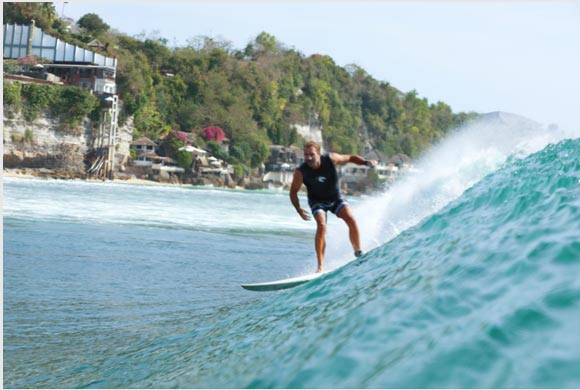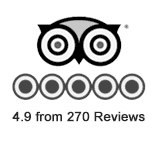SURF ETIQUETTE: THE GOLDEN RULES

THE GOLDEN RULES OF SURF ETIQUETTE
 Learning to surf is far more than starting a new sport and acquiring the skills necessary to compete.
Learning to surf is far more than starting a new sport and acquiring the skills necessary to compete.
It’s about learning the culture, participating in the lifestyle, and having the time of your life.
However, surfing can be a bit intimidating at times, and even dangerous if done incorrectly.
We’ve all have heard stories of “surf rage” and “locals only” spots, and we’ve all seen gruesome surf injuries.
At Swell Surf Camp, we want you to be well rounded surfers that could fit in at any break in the world at the end of your surf holiday.
In order to maximize the fun, minimize the risks to yourself and others, and progress your abilities on your surf holiday, you must familiarize yourself with the surf etiquette
The Golden Rules of Surf Etiquette.
1. KNOW YOUR ABILITIES
 While this may sound a tad condescending, understanding your own abilities in the water and humbly accepting them could save your life. If you’re still learning and you paddle out at an advanced wave, whether that’s a shallow reef break or any break on an overhead day, you run a high risk of injuring yourself and endangering those around you.
While this may sound a tad condescending, understanding your own abilities in the water and humbly accepting them could save your life. If you’re still learning and you paddle out at an advanced wave, whether that’s a shallow reef break or any break on an overhead day, you run a high risk of injuring yourself and endangering those around you.
When you surf breaks within your ability, you can learn and progress, so that you can eventually surf more advanced breaks. When you learn to surf at Swell Surf Camp, your lessons will always be taught at breaks that reflect your ability.
One of the best things to do when arriving at the beach is to observe the waves for 10-15 minutes to make sure the surf spot is right for your abilities; just because the wave at a certain spot were great yesterday for your ability does not make it safe today.
2. PADDLE OUT WITH CAUTION
 The most important thing to know when paddling out at a crowded line up is that the paddler yields to the riding surfer.
The most important thing to know when paddling out at a crowded line up is that the paddler yields to the riding surfer.
Meaning that if your paddle trajectory has you colliding with a surfer who is riding down the line of a wave, it is your responsibility to yield to that surfer, not the other way around.
In this example, Pete might be able to get back into position quicker, but he is also potentially getting into the way of the surfers on the wave. You don’t want to slalom through surfers when you are surfing. For safety and courtesy to other surfers, paddle wide of the surfers, back to the line-up, like Jim is doing in the picture.
CAUGHT INSIDE?
 If paddling wide is not an option, then aim for the white water of the wave, instead of going and aiming for the easier option of the shoulder of the wave ( where the surfer is)
If paddling wide is not an option, then aim for the white water of the wave, instead of going and aiming for the easier option of the shoulder of the wave ( where the surfer is)
3. BE POLITE & SMILE
Whether you’re paddling out to a line up with 5 people out from your surf camp or 50 strangers, the rules are the same. Be polite, smile, and say hello. It will bring a feeling of levity to everyone around and it will likely put you in the good graces of local surfers.
4. UNDERSTAND PRIORITY
 No, you’re not surfing a WSL heat, but priority still exists at every surf break. To put it simply, the surfer closest to the peak of the wave has priority over the surfer who is farther from the peak or on the shoulder. Understanding priority is key to existing peacefully in a crowded lineup.
No, you’re not surfing a WSL heat, but priority still exists at every surf break. To put it simply, the surfer closest to the peak of the wave has priority over the surfer who is farther from the peak or on the shoulder. Understanding priority is key to existing peacefully in a crowded lineup.
- The surfer who is closest to the curl, the peak or the breaking part of the wave has the right of way and priority over all other surfers;
- The surfer who is farther outside and away from the shore has priority over all other surfers sitting or paddling on the inside, even if closer to breaking part of the wave; (This rules is often ‘abused’ by stand up paddle surfers, since they can pick the waves up further outside than regular surfers, if they get too greedy catching all the set waves, the Paddle boarder can expect the stink eye or aggro vibes from the rest of the line up)
5. DON’T DROP IN ON OTHER SURFERS
 This may seem like a no-brainer, but it happens often. A surfer is riding down the line when all of the sudden, another surfer appears on the wave and tries to hop to their feet.
This may seem like a no-brainer, but it happens often. A surfer is riding down the line when all of the sudden, another surfer appears on the wave and tries to hop to their feet.
Dropping in on other surfers is what usually leads to conflict in the surf world, thankfully it’s easily avoidable. It starts with understanding priority, if someone inside of you is paddling for a wave, then you shouldn’t even try to paddle for it.
Awareness plays a role as well, even if you don’t see anyone near you paddling for a wave, as you paddle look to your left and right to ensure no one is riding down the line that might have dropped on at another peak.
Being a snake – ‘snaking’
Being a snake, dropping in on others, aggressively jockeying for position in the lineup, or any other act of being a wave hog is considered rude. When you paddle out don’t immediately paddle outside past everyone else and try to get the first wave that comes in. Wait for a few waves to break first. Before you know it, the lineup will have been shuffled around a little bit and you will be in position for a wave. Just because you can catch all of the waves doesn’t mean you should (this applies especially to longboarders and stand up paddlers).
Communicate
 When a wave breaks both left and right, two surfers can happily ride the same wave, just make sure to communicate by announcing if you’re going right or left, even if you think it’s obvious. A little communication in the water can do a lot to keep everyone safe and having fun.
When a wave breaks both left and right, two surfers can happily ride the same wave, just make sure to communicate by announcing if you’re going right or left, even if you think it’s obvious. A little communication in the water can do a lot to keep everyone safe and having fun.
Share
Just because you can catch every wave, doesn’t mean you should. If you’re on a large foam board or longboard that catches waves easily, it doesn’t mean you always get to take the wave from the shortboard next to you that’s looking to practice turns and airs. Always keep in mind that the ocean is for everyone and act accordingly.
6. BE CONSCIOUS OF YOUR EQUIPMENT
 Most surf injuries are not caused by the seafloor, other surfs, or wildlife, they are caused by surfboards. Surfboards are rock solid and have sharp fins, they can do some serious damage.
Most surf injuries are not caused by the seafloor, other surfs, or wildlife, they are caused by surfboards. Surfboards are rock solid and have sharp fins, they can do some serious damage.
To avoid unnecessary injury to yourself and anyone else around you, be responsible with your board. Don’t just let go of your board when there are other surfers around you. ( in fact unless you are surfing 20′ waves, don’t ever let go of your board)
That means using a leash, not abandoning your board during your paddle out or after a wipeout. If your board is near you and you have a tight grip on the leash, or your board is under you, it won’t hurt you or any other surfer in the water.
7. KNOW THE BREAK
This is a crucial step for surfers of any level, but it is often skipped. If you’re about to surf at a new break, take a while to watch the waves. Notice where they are breaking, where the channels are, and what the current / rip tide is doing. If you can, take it a step further by asking another surfer about the spot.
Chances are, they will be helpful and tell you where to paddle out, where the peaks are, and more! At Swell, we teach you everything you need to know about our local break before we paddle out ( including Surf Etiquette)
8. RESPECT THE BREAK & BEACH
This one is obvious. Don’t litter, don’t’ leave anything behind. Pack in and pack out. You can even take it a step further and pick up any litter you might encounter. We love our local surf beach, and we do everything we can to keep it beautiful.
9. APOLOGIZE IF YOU MESS UP
We get it, accidents happen. You messed up, and that’s okay, as long as you apologize. It may seem trivial but making amends and making your intentions clear go a long way in a crowded lineup.
10. FORGIVE AND FORGET
Lastly, if someone else in the water wrongs you, if they burn you, drop in on you, or send a board flying at you, forgive and forget. No one likes to surf mad, and no one wants to be around an angry person.
TIPS FROM LAIRD HAMILTION
The above surf etiquette rules all apply for our local surf spots. At Encuentro there are 2 other rules that any traveling surfer should be aware off:
- No Stand Up Paddle surfing (SUP) at Playa Encuentro
There are numerous off shore reefs that are ideal for Stand up paddle surfing, in and around Cabarete, so there’s no need to bring a dangerous SUP board & paddle into a lineup where there are kids and learners. Find the open spaces up and down the coast. This also applies to the new sport of foiling. Too dangerous to other surfers at our local surf spot.
- No motorized watercrafts at Playa Encuentro.
No JetSki’s anywhere near Playa Encuentro, they are noisy, smelly and dangerous to the other surfers.
SURF ETIQUETTE VIDEO
Here’s an excellent video explaining different scenerio’s where good surfing etiquette is applied. Must watch.
Frequently Asked Questions
What does ‘Respect the Right of Way’ mean?
It means letting the surfer closest to the peak of the wave go first. They have the priority to ride the wave.
Why shouldn’t I drop in on others?
Dropping in on someone means taking a wave that someone else is already riding. It’s rude and can cause accidents.
How do I paddle out without bothering others?
Pick a path where you won’t get in the way of other surfers riding waves. Also, time your paddle to avoid oncoming surfers.
Why is it important to keep control of my board?
Losing control of your board can hurt you and others. Always use a leash and know when to hold onto your board or let it go.
What does being a ‘wave hog’ mean?
A wave hog is someone who takes more than their fair share of waves, leaving fewer opportunities for others. Share the waves so everyone can have fun.
How can I help protect the beach and environment?
Always clean up after yourself, don’t leave trash, and respect local wildlife. Keeping the beach clean helps everyone enjoy it.
What should I do if I make a mistake while surfing?
If you mess up, apologize to anyone affected. Owning your mistakes and making amends shows respect and keeps the vibe friendly.
Why should I be friendly and polite while surfing?
Being nice and helping others creates a positive atmosphere. A friendly lineup makes surfing more enjoyable for everyone.
Surfing is more than just a sport, it becomes ingrained in us the moment we catch our first wave. In order to enjoy surfing to its fullest potential, stay safe in the water, and share it with others, we must stick to The Golden Rules of Surf Etiquette. We have travelled to a lot of different countries and have seen 1000’s of different surf spots & one of the things that really makes our local surfing beach stand out is the mellow & friendly vibe between locals, expats and visiting surfers.
Let’s keep it that way, let’s all stick to the surf etiquette, so we can all leave the water after a surf session with a big smile on our faces.
More info: https://www.surfgirlmag.com/2018/07/surf-etiquette/
Surfing at Playa Encuentro with Swell’s Romy
-
WHERE IS SWELL LOCATED?
Swell Surf camp is located on the North coast of the Dominican Republic, right in the center of the cool surfer town of Cabarete. With 3 international airports to choose from it's also one of the easiest places to get to for a quick surf getaway. Puerto Plata Airport is only 25 minutes away from Swell. On the' getting here' page you'll find the different options of getting to us.
-
ABOUT SWELL SURF CAMP
Founded in the winter of 2009, Swell Surf Camp emerged from Jeroen and Clare Mutsaars vision. They lived in the Dominican Republic for eight years and spotted a gap in the surf camp market for higher quality accommodations combined with an engaging social atmosphere. Their extensive travel and stay experiences across different countries like Costa Rica, Nicaragua, Peru, Hawaii, Indonesia and various European nations fueled their passion to elevate the surfing retreat experience.
Swell Surf Camp is renowned as the world’s first luxury surf camp tailored specifically for beginners. The founders collaborated with a notable Swiss architect to design facilities that blend comfort with style. This innovative approach ensures every guest enjoys superior lodging and amenities. Since its inception, Swell has taught over 9,000 people how to surf with an emphasis on safety, fun, and structure.
Our achievements speak volumes. Swell has collected numerous accolades and maintains hundreds of stellar reviews from guests globally. Recognized repeatedly as the leading destination for luxury surf vacations, our commitment to excellence keeps us at the forefront of the industry.
Beyond surfing, Swell offers a diverse range of activities including kitesurfing, wingfoiling, and yoga classes. Guests can also enjoy horse riding both on scenic beaches and mountain trails—plus exciting adventure-filled excursions like canyoning.
A crucial element of any vacation is food, and here at Swell we excel. We provide delicious home-cooked meals daily. For evenings out, guests find themselves just minutes away from an array of dining options that promise satisfying culinary adventures.
For those who prioritize upscale amenities and wellness in a unique setting built around learning surf skills amid profound natural beauty, Swell should be on the top of your surf destination list
-
WHAT TO EXPECT FROM A 1 WEEK LEARN TO SURF HOLIDAY
Dreaming of catching your first wave but wondering if surf lessons are really for you? At Swell Surf Camp, our lessons are designed specifically for beginners, and we mean absolute beginners, particularly those between 40 and 55 from cities like New York, Boston, or Toronto. You’ll never feel rushed, lost, or out of place. Our expert instructors genuinely love teaching, and their approach is as much about encouragement as it is about skill-building. Every instructor carefully tunes each lesson to fit one person, you, so you always get personalized support, whether you’re working on basic paddling, learning to pop up, or building confidence in the water.
The journey at Swell Surf Camp is about progression, not perfection. You’ll start with the very basics, practicing on the sand before moving into gentle ocean waves with your instructor right beside you. Throughout every lesson, our focus is on clear communication, safety, and keeping things fun. As you progress, our instructors give you feedback in real-time, helping you celebrate small wins and guiding your next steps. You’ll learn solid surfing foundations, water safety, and even the unwritten rules of surf culture. By the end of your stay, you’ll be amazed at your own growth and how natural surfing feels. Don’t wait to discover how transformative a single lesson can be, book your surf adventure at Swell Surf Camp and let your surfing journey begin!
-
WHAT SPORTS DOES SWELL OFFER?
It's not only surfing that's on offer at Swell, we also offer learn to wingfoil and learn to kitesurf packages.
 Laird Hamilton recalls, “I got run over by a guy when I was sixteen and he broke my leg. A guy ran me over with a giant longboard, and it compounded my leg, and that was one of those things that you learn, like, ’Don’t trust that the guy sees you and that they’re going to avoid you.’ Just remember that they’re probably going to run you over if you don’t watch where you’re going.”
Laird Hamilton recalls, “I got run over by a guy when I was sixteen and he broke my leg. A guy ran me over with a giant longboard, and it compounded my leg, and that was one of those things that you learn, like, ’Don’t trust that the guy sees you and that they’re going to avoid you.’ Just remember that they’re probably going to run you over if you don’t watch where you’re going.”




